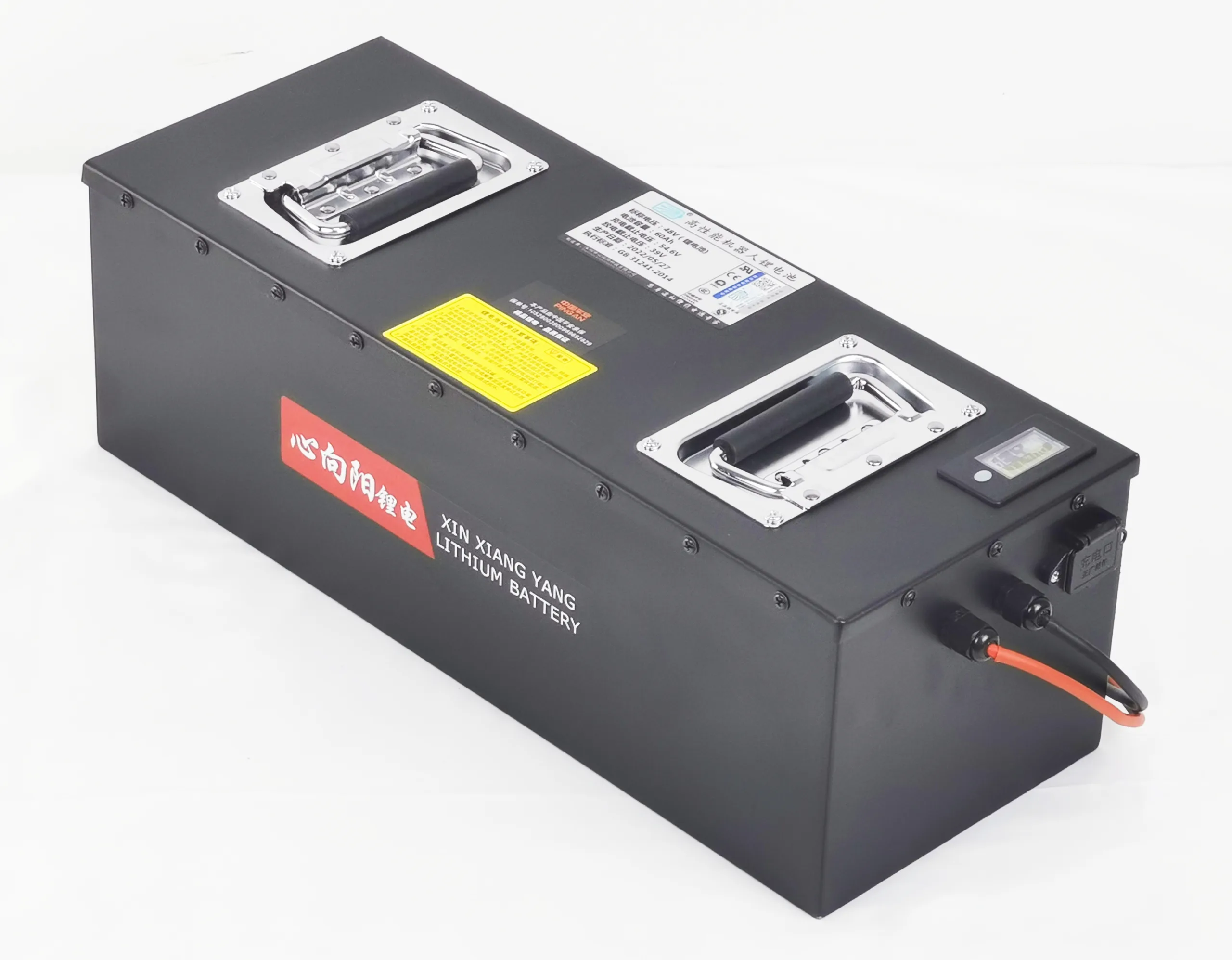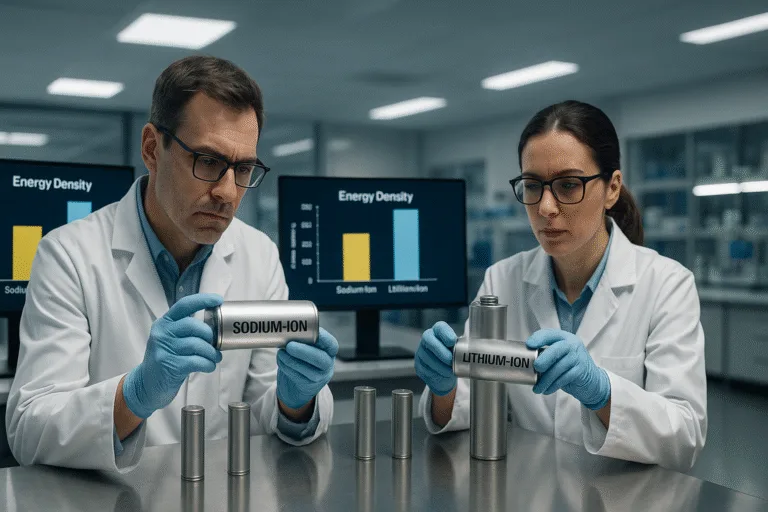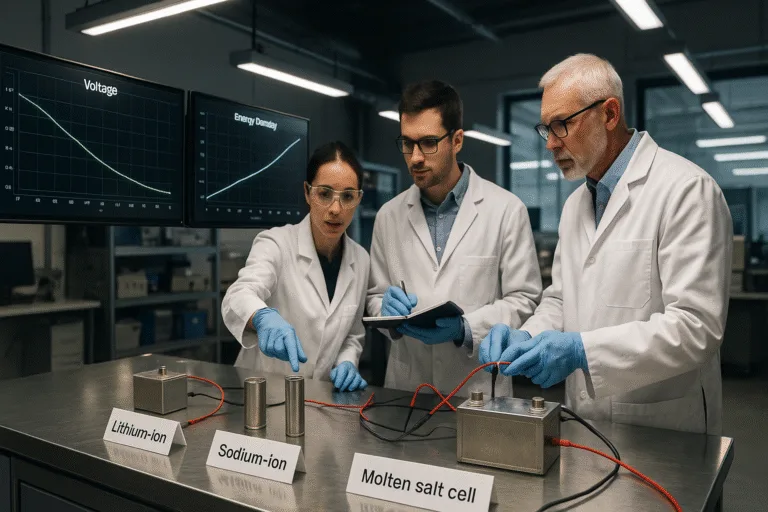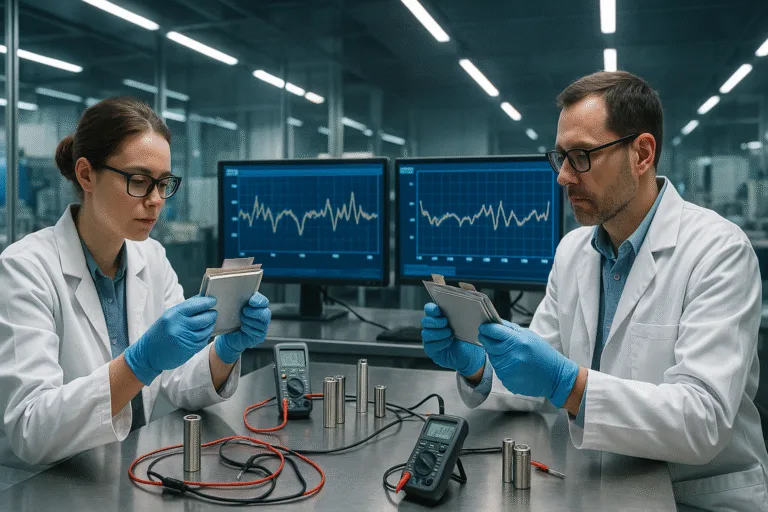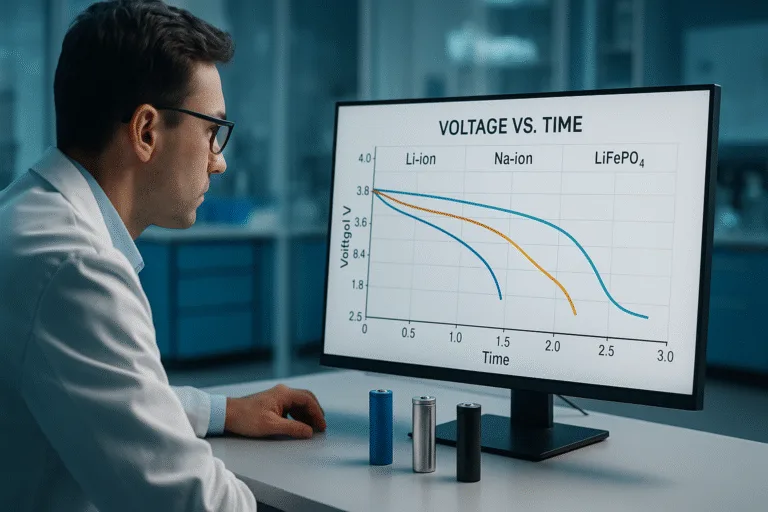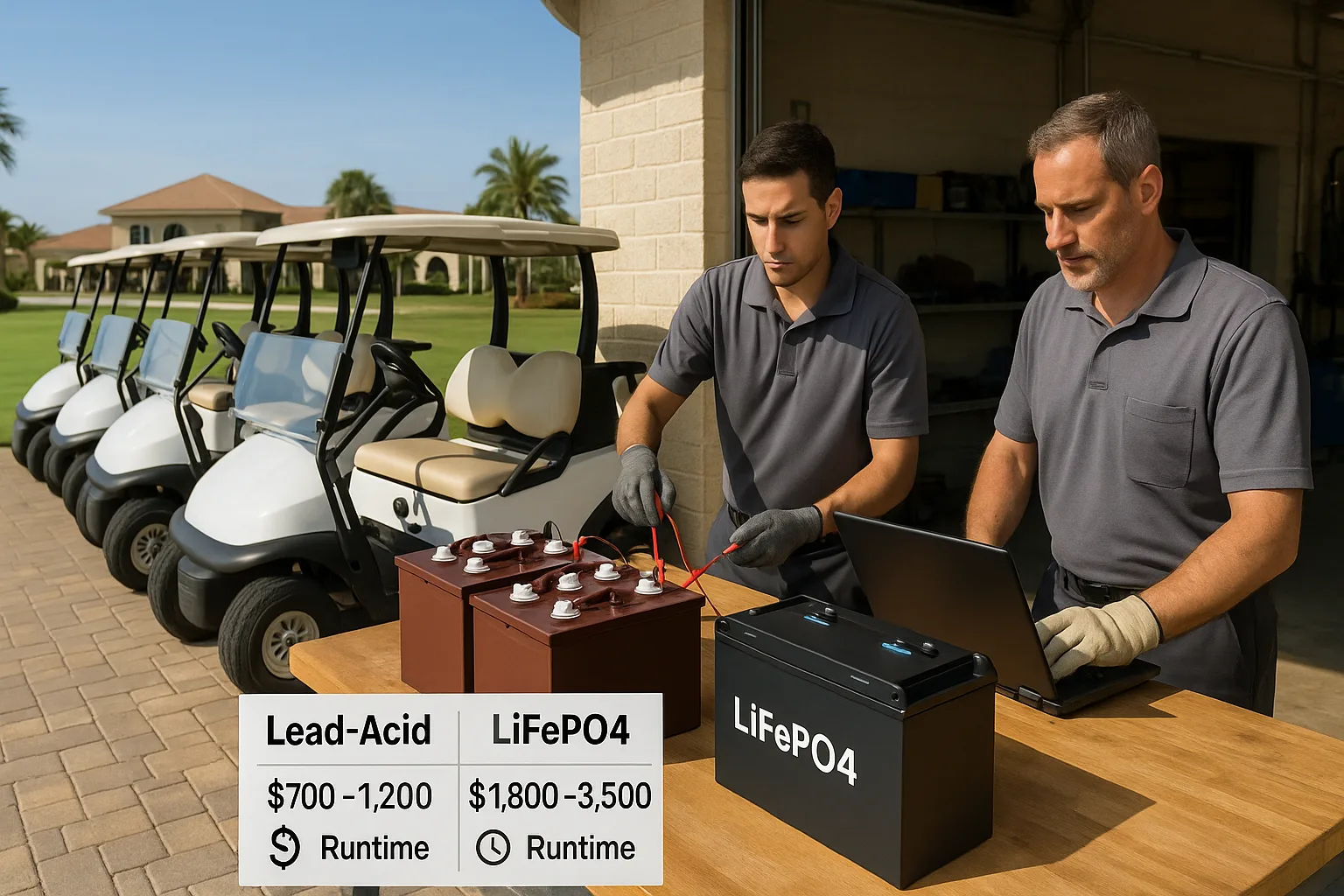
Carts slow down. Range drops. Bills rise. Wrong packs and bad sizing cause most pain. Specs look hard when time is short.
I choose batteries by duty cycle, budget, and fit. Lead-acid is cheapest today. LiFePO4 costs more but runs longer and weighs less. I always match system voltage, tray size, controller current, and charger profile to avoid early failure.
I test packs each week for fleets. I also fix failed installs. Clear steps save hours and money.
What is the average cost to replace golf cart batteries?
Budgets break when people guess. I use simple bands by chemistry and labor. I include chargers and small parts in my quote.
Most 36–48V flooded lead-acid1 jobs land at $700–$1,200 installed. AGM2 runs $1,100–$1,800. A 48V 100Ah LiFePO4 conversion3 costs about $1,800–$3,500. A smart charger adds $100–$300 if your old one does not match.
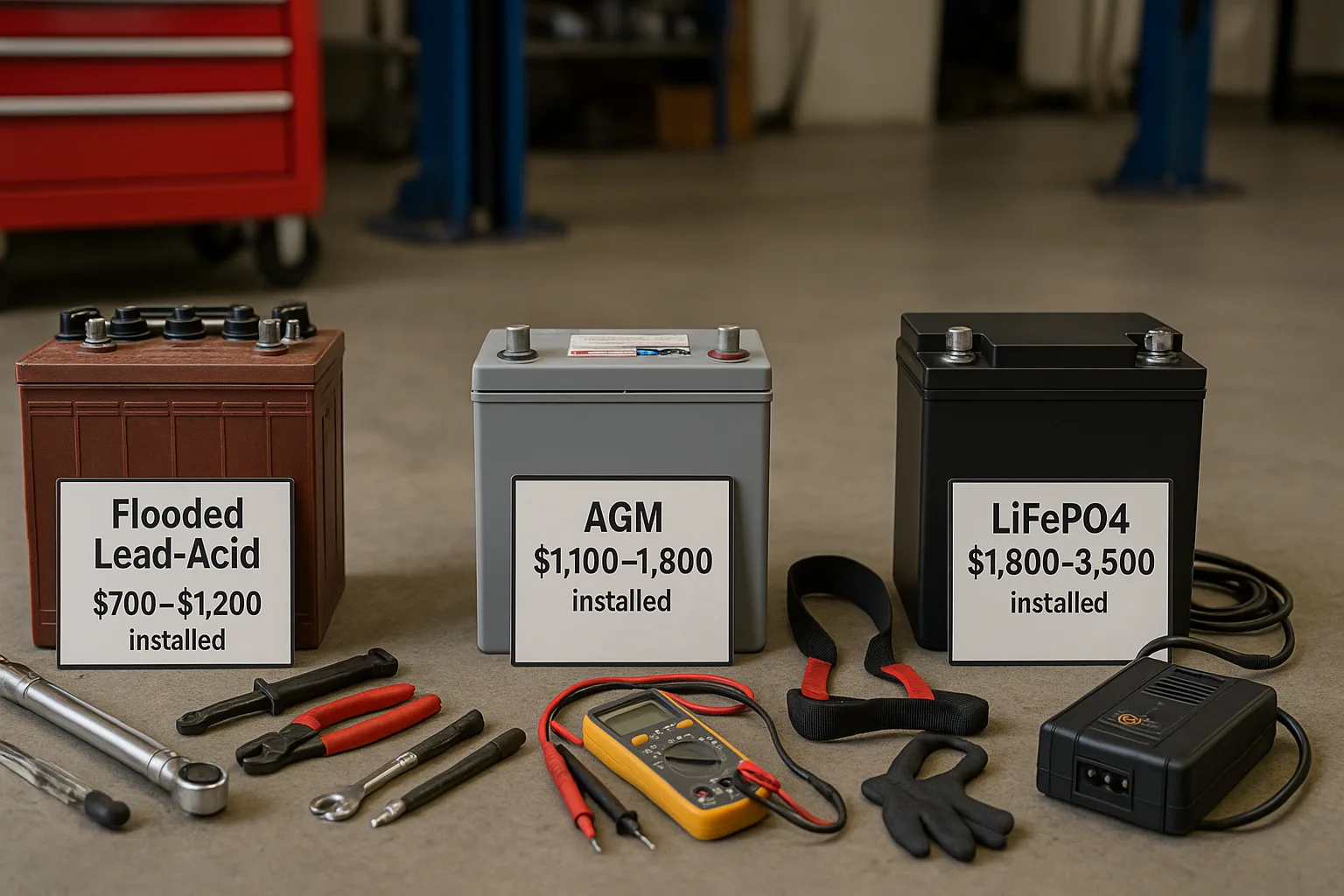
Price ranges by setup (installed)
| System / Pack | Chemistry | Typical Parts | Installed Total* | Lifespan (yrs) | Notes |
|---|---|---|---|---|---|
| 36V (6×6V) | Flooded lead-acid | Batteries, cables, labor | $700–$1,000 | 2–4 | Lowest upfront; needs watering |
| 48V (6×8V or 8×6V) | Flooded lead-acid | Batteries, cables, labor | $800–$1,200 | 3–5 | Common for course fleets |
| 48V (6×8V or 8×6V) | AGM/Gel | Batteries, cables, labor | $1,100–$1,800 | 3–6 | Sealed; less care; heavier |
| 48V 50–60Ah | LiFePO4 | Pack(s) w/ BMS, mount, labor, charger (maybe) | $1,300–$2,300 | 8–10+ | Light; good for light duty |
| 48V 100Ah | LiFePO4 | Pack w/ BMS, mount, charger (often new) | $1,800–$3,500 | 8–10+ | Long life; fast charge |
*Totals vary by brand, region, taxes, and shop rate.
What drives total cost
- Parts quality: cells, BMS4, case, busbars, cables.
- Labor time: removal, cleaning, brackets, test drive.
- Charger match: correct profile prevents damage.
- Warranty length: longer terms cost more.
- Freight and hazmat: big packs ship for more.
How I lower the bill without risk
- I reuse good trays and cables when they pass tests.
- I bundle a charger to win a better kit price.
- I schedule fleet installs in batches to cut hours.
- I claim core credits on lead-acid returns.
- [Personal story placeholder].
What type of battery is best for a golf cart?
Use case decides the winner. I compare runtime5, care, weight, and long-term cost, then I give a simple pick.
For most daily carts, LiFePO4 is best. It delivers long cycle life6, strong voltage under load, fast charging, and low upkeep. Flooded lead-acid fits tight budgets. AGM helps when you want sealed packs and simple care.
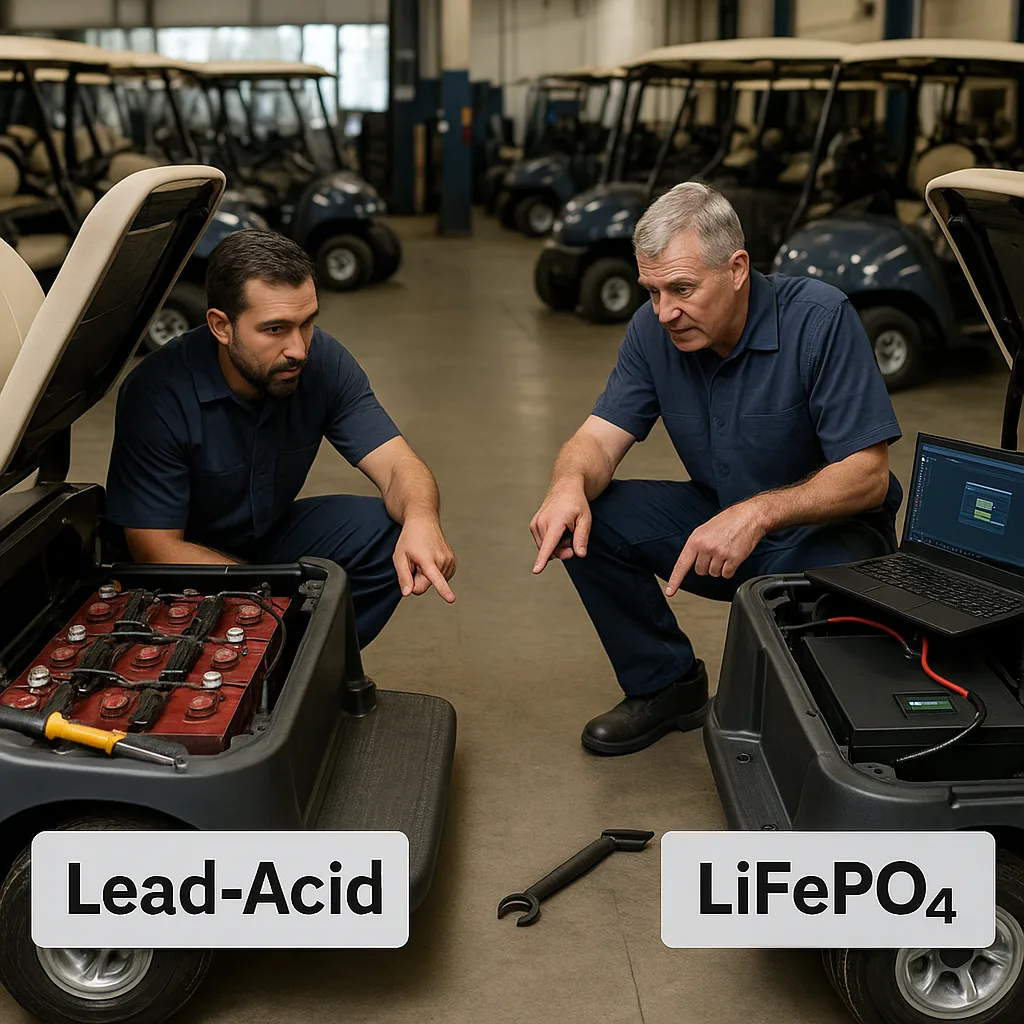
Quick pick matrix
| Use case / Priority | Best choice | Reason |
|---|---|---|
| Lowest upfront cost | Flooded lead-acid | Cheapest parts; easy sourcing |
| Rental fleets, heavy daily duty | LiFePO4 | Long life; fast turn-around between rides |
| Low-maintenance, sealed | AGM | No watering; simpler checks |
| Max range, hilly terrain | LiFePO4 | High usable capacity; strong under load |
| Cold storage, rare use | AGM or Flooded | Lower price; keep on maintainer |
Chemistry comparison
| Factor | Flooded Lead-acid | AGM Lead-acid | LiFePO4 |
|---|---|---|---|
| Weight (48V pack) | High | Very high | Low |
| Usable DoD (typical) | 50–60% | 60–70% | 90–100% |
| Cycle life (to 80% cap) | 300–500 | 400–700 | 2,000–4,000+ |
| Maintenance | Watering, checks | Low | Very low |
| Charge time | Slow–medium | Medium | Fast |
| Upfront cost | Low | Medium | High |
| Total cost of ownership | Medium–High | Medium | Low–Medium |
Fit and safety checks I never skip
- I verify tray size, hold-downs, and weight limits.
- I confirm BMS peak and continuous current vs controller.
- I update the charger profile before first charge.
- I lock mounts against vibration and splash.
How long will a 100Ah lithium battery last in a golf cart?
Runtime changes with route, load, speed, and wind. Simple math gives a good plan. On-site logs make it exact.
A 48V 100Ah LiFePO4 stores ~4.8 kWh. Usable energy is ~4.3–4.8 kWh. With 1.2–3.0 kW average draw, runtime is about 1.5–4.0 hours. At 10–15 mph, range is roughly 15–40 miles.
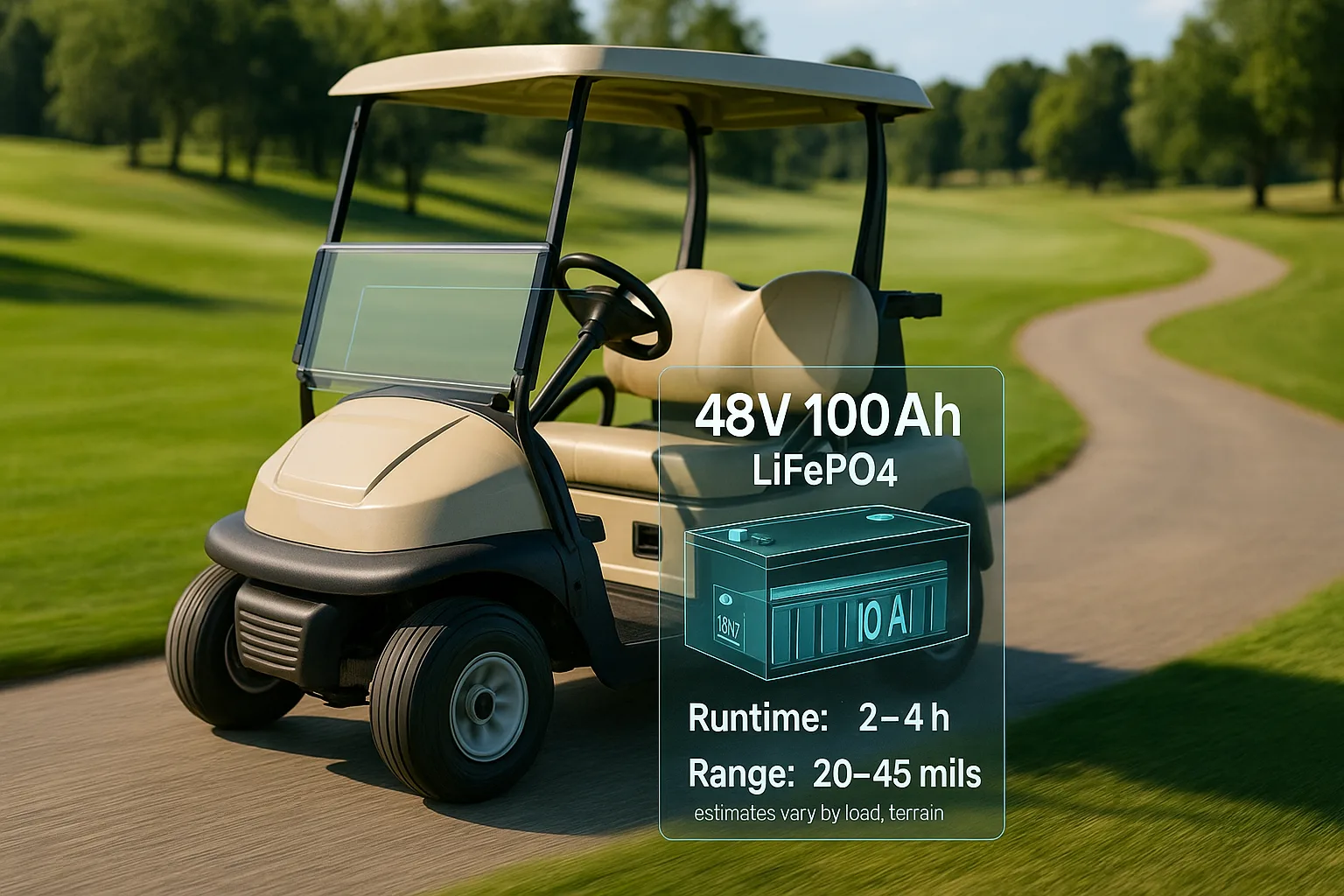
Fast math I share with buyers
- Energy ≈ Voltage × Ah = 48V × 100Ah = 4.8 kWh.
- Usable energy ≈ 90–100% = 4.3–4.8 kWh.
- Runtime (h) ≈ Usable kWh ÷ Average kW.
- Range (mi) ≈ Runtime × Speed.
Example: 1.5 kW avg → 4.5 kWh ÷ 1.5 = 3.0 h → at 12 mph ≈ 36 miles.
Runtime and range scenarios
| Terrain / Load | Avg Power (kW) | Hours (4.5 kWh usable) | Range @ 12 mph |
|---|---|---|---|
| Flat course, light load | 1.2 | 3.8 h | 45 mi |
| Mixed hills, two riders | 1.8 | 2.5 h | 30 mi |
| Steep hills, heavy gear | 2.5 | 1.8 h | 22 mi |
| Towing or work duty | 3.0 | 1.5 h | 18 mi |
What cuts range in the real world
- Soft tires and bad alignment.
- High top speed and hard starts.
- Cold weather and headwinds.
- Old bearings and dragging brakes.
- Wrong charger profile or partial charges.
How I size a pack for your route
- I note system voltage and controller current.
- I log average power over a full route.
- I size usable kWh with 20–30% reserve.
- I confirm BMS current and charge rate.
- I test on site and tune tire pressure and speed.
Sizing tip: If your route needs 2.8 kWh, I target 3.6–4.0 kWh usable. A 48V 80–90Ah LiFePO4 often works. For steep hills, I stay with 100Ah.
Conclusion
Pick by duty, not hype. Price the whole system. Size by load. Test, then buy.
-
Explore this link to understand the pricing and options for flooded lead-acid batteries, which are budget-friendly. ↩
-
Learn about AGM batteries, their advantages, and why they might be the right choice for your golf cart. ↩
-
Discover the costs and benefits of converting to LiFePO4 batteries for enhanced performance. ↩
-
Learn about the role of BMS in battery performance and safety for golf carts. ↩
-
This link will provide insights into runtime factors, helping you optimize battery usage. ↩
-
Understanding cycle life can help you choose the best battery for your needs. ↩

